This market used to earlier take place in Imbaba, but as the city expanded, the camel market was moved to the suburb of Birqash which is at the edge of the Western Desert.
Hundreds of Camels are sold here everyday. But this is definitely not a market for the Animal lover. The animals aren't in pitiable condition, but they could be treated much, much better than they currently are.
Camels from Sudan are brought into Egypt on the 40 day road via Abu Simbel to the market in Daraw. The unsold camels are then loaded into trucks and brought to Birqash after a 24 hour drive. Camels also arrive from the rest of Egypt and sometimes from Somalia. These camels are traded for other livestock or cash and are mostly bought for farm work or consumption.
Photo opportunities abound, if you can get the angles right since the camels are almost monochromatic in color. The traders have wonderfully charactered faces and I would have loved to be able to take close up portraits and talk to them and listen to their stories. Unfortunately as a woman, taking close up pictures of men is not the sanest thing to do. And my Arabic is too limited to have had a proper conversation with them.
As an obvious foreigner, you will be charged entry to the market. (it has a gated entry) 20LE per person. Then they may try to charge you an additional 10LE per camera. Once you enter, you will not face any obvious resentment. The traders are pretty welcoming of foreigners and try to make a buck or so by posing for pictures with them. There were at least 10 other foreigners the day we visited.The only thing to be aware of is to not behave like an Animal Rights Activist and they will pretty much maintain their distance for the most part.
The market extends inside for a distance with sections cordoned off by walls for certain traders. Small single level constructions provide basic housing for traders. The roofs of which are covered with bales of hay. There are basic ramps built for loading and unloading camels from the trucks.
Obviously not all the camels are sold and some of them may not be worth carrying back. Some don't even survive the truck ride to Birqash. Their corpses are carelessly strewn about the desert as you approach the market. There are a few pictures of that at the bottom. Please don't scroll to the end, if you are squeamish.
Thanks to all my online friends who helped me find directions to the market. The best ones were provided by Karim who said Take Cairo/Alex highway to Abu Rawash road. You take a right onto Abu Rawash road which is right before the Carrefour/Dandy mall parking lot. You take this until you reach the end of the road where it intersects with the Mansouriyya Canal road. Take a left onto the Mansouriyya Canal road. Keep going for a ways and start looking for signs, either the suk il gamaal sign or Nimos Farm sign, on the left-hand side of the road. Take left onto small canal road and go until the end where you hit a midaan/circle. There will be a sign pointing towards the suk and it's only a little ways down the road from there. Leaving from downtown on an early Friday morning, this way can get you there in 45 minutes if you use the Mahwar.
Thomas also gave a good alternate route if you are closer to the pyramids
The road that leads there is accessed from right next to the Giza Pyramids, but I can't easily describe how to find it. (Kim's note : at the main circle take the road that goes to Kerdasa/ Mansoureyya) If you ask a couple people in the area, one should point you in the right direction.
Once on this road, you end up following it straight about 20-25 min and then you make a left at the camel market sign (in Arabic) and drive about 1-2 kilometers to the market.
Good luck.
Alex gave me a good tip. He said that the road would make the car smell and it would be better to take a Yellow Cab. While this is extremely true if you take the Imbaba canal route (the road was piled high with garbage on both sides for the most part and quite nauseating even with our windows up and the air conditioning on), the Pyramids, Kerdasa and Abu Rawash routes are more scenic and pleasant and can be done in a regular car.
The Drive through the Nile Delta makes you forget that you are surrounded by the largest desert in the world.Alex gave me a good tip. He said that the road would make the car smell and it would be better to take a Yellow Cab. While this is extremely true if you take the Imbaba canal route (the road was piled high with garbage on both sides for the most part and quite nauseating even with our windows up and the air conditioning on), the Pyramids, Kerdasa and Abu Rawash routes are more scenic and pleasant and can be done in a regular car.
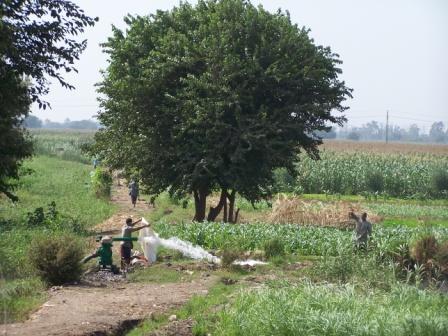 and is very reminiscent of the UP and Punjab fields. The River Nile in the background is of course, unique to Egypt
and is very reminiscent of the UP and Punjab fields. The River Nile in the background is of course, unique to Egypt 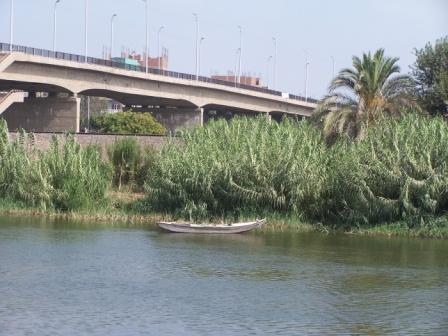
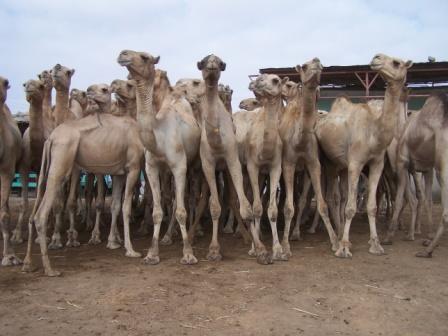

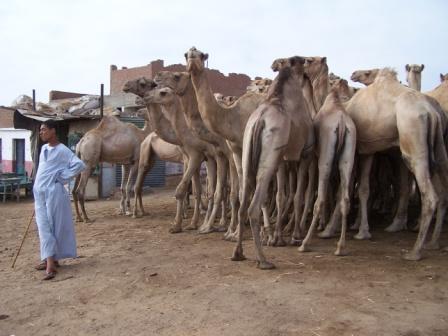
Some of the camels have one of their legs tied to prevent them from running away.


Walled Compound
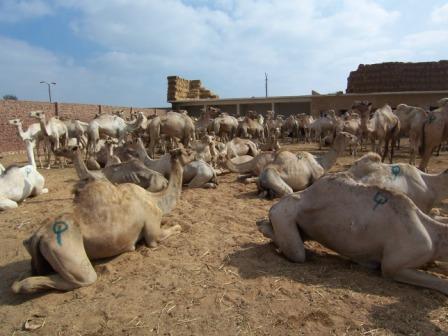
Quality check of camels like horses is done by inspecting the teeth. This one showed us his teeth voluntarily.

Unloading of Camels
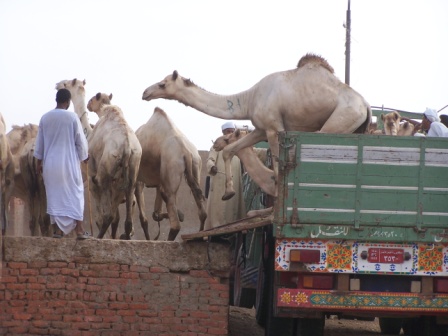
Sold camels being taken away in a pick-up
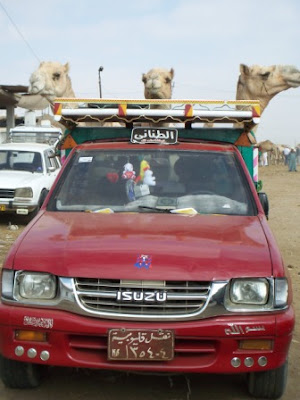
Some of the character filled faces

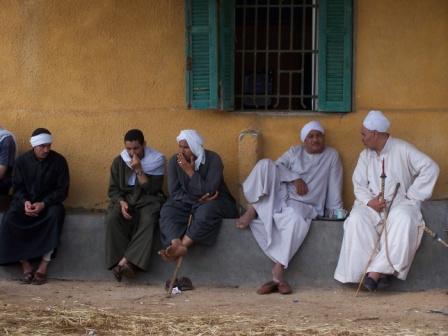

Warning: The pictures below are quite gory.
Please do not scroll down if you are easily upset.
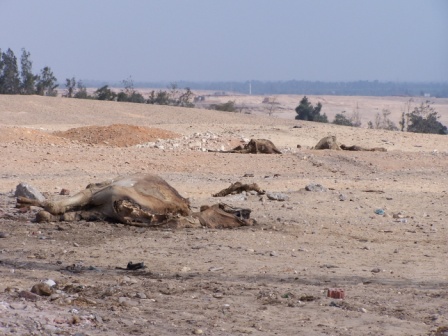

Death is inevitable, but I wish, they could at least dispose the bodies in a less conspicuous and more humane fashion, rather than just leaving it out to the elements.
Some of the facts, come from the Lonely Planet guide for Egypt
Many of the pictures were taken by my husband
Published on desicritics.org
No comments:
Post a Comment